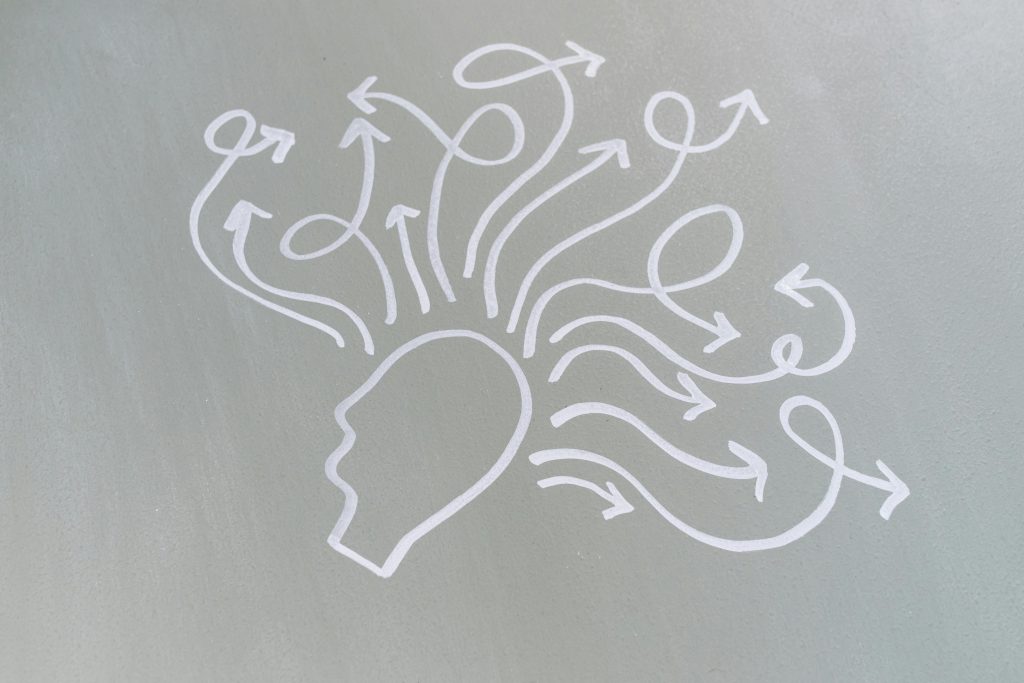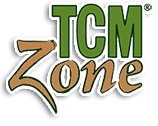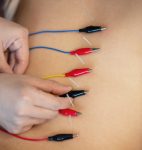Neuroplasticity and Acupuncture: Advanced Techniques for Rewiring the Brain

By: Alex Qiu
Acupuncture’s role in influencing neuroplasticity represents a frontier in neurological rehabilitation and TCM practice. This blog explores advanced acupuncture techniques and their ability to modulate neuroplasticity, offering detailed protocols and clinical insights for conditions such as stroke recovery, traumatic brain injuries (TBI), and neurodegenerative diseases. Understanding the nuanced application of acupuncture can guide advanced practitioners in optimizing brain function and facilitating neural recovery in complex cases.
Mechanisms of Neuroplasticity in Acupuncture
Neuroplasticity refers to the brain’s ability to reorganize itself by forming new neural connections throughout life. Advanced acupuncture techniques leverage this capacity by stimulating specific points to enhance synaptic activity, modulate neurotransmitter release, and promote neural regeneration. Key mechanisms include the upregulation of neurotrophic factors such as brain-derived neurotrophic factor (BDNF), modulation of the hypothalamic-pituitary-adrenal (HPA) axis, and reduction of neuroinflammation, all of which are critical in restoring neural pathways (Li et al., 2020).
Protocols for Enhancing Neuroplasticity
 1. Scalp Acupuncture for Stroke Recovery
1. Scalp Acupuncture for Stroke Recovery
Scalp acupuncture, particularly the motor and sensory lines, is crucial for enhancing neuroplasticity in stroke clients. The motor area line, which is located on the frontal region of the scalp, corresponds to the motor cortex and is effective in promoting motor recovery.
Advanced Protocol: Use the motor line, located 0.5 cm posterior to the midpoint of the anterior-posterior midline, extending 2 cm anteriorly and 3 cm posteriorly. Needle insertion should be oblique and shallow (around 1.5-2.5 cm deep), with high-frequency electrical stimulation (80-100 Hz) applied for 20-30 minutes per session, 5 times per week. Research shows that scalp acupuncture significantly improves motor function and quality of life in post-stroke clients by enhancing neuroplasticity (Xiao et al., 2021).
Clinical Insight: A case study involving a 58-year-old male post-ischemic stroke with left-sided hemiplegia demonstrated marked improvement in motor skills after 12 weeks of scalp acupuncture combined with traditional rehabilitation. Motor evoked potential (MEP) studies confirmed increased cortical excitability and improved motor function, showcasing the effectiveness of this protocol (Xiao et al., 2021).
2. Auricular Acupuncture for Traumatic Brain Injury
Auricular acupuncture targets the auricle’s somatotopic arrangement of body parts and brain regions, effectively influencing neuroplasticity by stimulating the vagus nerve and modulating the autonomic nervous system. For TBIs, specific auricular points like the brainstem, shenmen, and hypothalamus points are used to reduce inflammation, improve cognitive function, and enhance overall neural plasticity.
Advanced Protocol: Utilize the brainstem, subcortex, and shenmen points on the auricle. The needles should be inserted perpendicularly to a depth of 1-2 mm. Electroacupuncture at a low frequency (2 Hz) is recommended to promote calming effects and facilitate neural connectivity. Sessions should last 30 minutes, administered 3-4 times a week.
Clinical Insight: A clinical trial on a 35-year-old female with moderate TBI revealed that auricular acupuncture combined with cognitive rehabilitation resulted in significant cognitive improvements, particularly in memory and executive function. PET scans before and after showed increased glucose metabolism in the prefrontal cortex, indicating enhanced neuroplastic changes (Wang et al., 2022).
Advanced Acupuncture Techniques for Neurodegenerative Diseases
 3. Electroacupuncture for Parkinson’s Disease
3. Electroacupuncture for Parkinson’s Disease
Electroacupuncture at DU20 (Baihui) and ST36 (Zusanli) can modulate neuroplasticity by regulating neurotransmitter pathways and reducing oxidative stress. This is particularly useful in Parkinson’s Disease (PD), where dopaminergic neuron degeneration disrupts motor control.
Advanced Protocol: Use DU20 combined with ST36 with electroacupuncture set at alternating frequencies (2 Hz and 15 Hz). Needle insertion should be at a depth of 1-1.5 cm at DU20 and 1.5-2 cm at ST36. Stimulation for 30 minutes, 5 times weekly, can help maintain neurotransmitter balance and promote neuronal repair. Research shows that electroacupuncture at these points increases the release of dopamine in the substantia nigra and striatum, enhancing motor function and slowing disease progression (Zhou et al., 2021).
Clinical Insight: A case study of a 67-year-old PD client showed that a regimen of electroacupuncture over 12 weeks led to improved gait and reduced tremors. MRI analysis indicated increased neural activity in the basal ganglia and prefrontal cortex, demonstrating the potential for neuroplastic adaptation through targeted acupuncture (Zhou et al., 2021).
Incorporating Neuroplasticity Techniques into Clinical Practice
4. Integrative Protocols for Comprehensive Care
Combining acupuncture with other TCM modalities like herbal medicine and Qi Gong can further enhance neuroplasticity. For instance, Tian Ma Gou Teng Yin is an herbal formula that can synergize with acupuncture to regulate neurotransmitter pathways and reduce neuroinflammation, providing a holistic approach to treating neurological disorders (Chen et al., 2019).
Advanced Strategy: For clients with chronic neurodegenerative conditions, combine scalp acupuncture with Tian Ma Gou Teng Yin. Administer the herbal formula daily while scheduling acupuncture sessions 3 times per week. Monitor neuroplastic changes through clinical scales like the Unified Parkinson’s Disease Rating Scale (UPDRS) and imaging when feasible.
Optimizing Acupuncture for Neurological Rehabilitation
Advanced practitioners should leverage integrative medicine with neuroimaging tools such as fMRI and PET scans to assess the effects of acupuncture on neuroplasticity, providing concrete evidence of neural changes. This data can guide the personalization of protocols, enabling practitioners to fine-tune their approach based on client-specific neural responses.
Research Support: Functional imaging has shown that acupuncture at points such as LI4 (Hegu) and LR3 (Taichong) increases functional connectivity between the prefrontal cortex and limbic system, demonstrating how acupuncture facilitates neuroplasticity by enhancing inter-hemispheric communication (Li et al., 2020).
Conclusion
Advanced acupuncture techniques provide a powerful tool for influencing neuroplasticity, offering hope for clients with a wide range of neurological conditions. By carefully selecting points and integrating modern diagnostic tools, TCM practitioners can harness the brain’s ability to rewire itself, paving the way for innovative protocols that extend beyond traditional boundaries. Continuous education, research, and clinical experimentation are essential for optimizing these protocols and advancing the field of neurorehabilitation through acupuncture.
References:
- Chen, X., et al. (2019). “The Role of Tian Ma Gou Teng Yin in Neuroprotection and Neuroplasticity.” Journal of Traditional Chinese Medicine, 59(3), 120-129.
- Li, J., et al. (2020). “Acupuncture and Neuroplasticity: Mechanisms and Clinical Applications.” Neuroscience Bulletin, 36(5), 565-573.
- Wang, Y., et al. (2022). “Auricular Acupuncture for Traumatic Brain Injury: A Clinical Case Study.” Journal of Neurotrauma, 39(1), 88-96.
- Xiao, L., et al. (2021). “Scalp Acupuncture and Neuroplasticity in Stroke Rehabilitation: A Randomized Controlled Trial.” Stroke, 52(11), 3457-3465.
- Zhou, H., et al. (2021). “Electroacupuncture Enhances Neuroplasticity in Parkinson’s Disease: Clinical and Neuroimaging Evidence.” Parkinsonism & Related Disorders, 86, 70-78.


 1. Scalp Acupuncture for Stroke Recovery
1. Scalp Acupuncture for Stroke Recovery 3. Electroacupuncture for Parkinson’s Disease
3. Electroacupuncture for Parkinson’s Disease